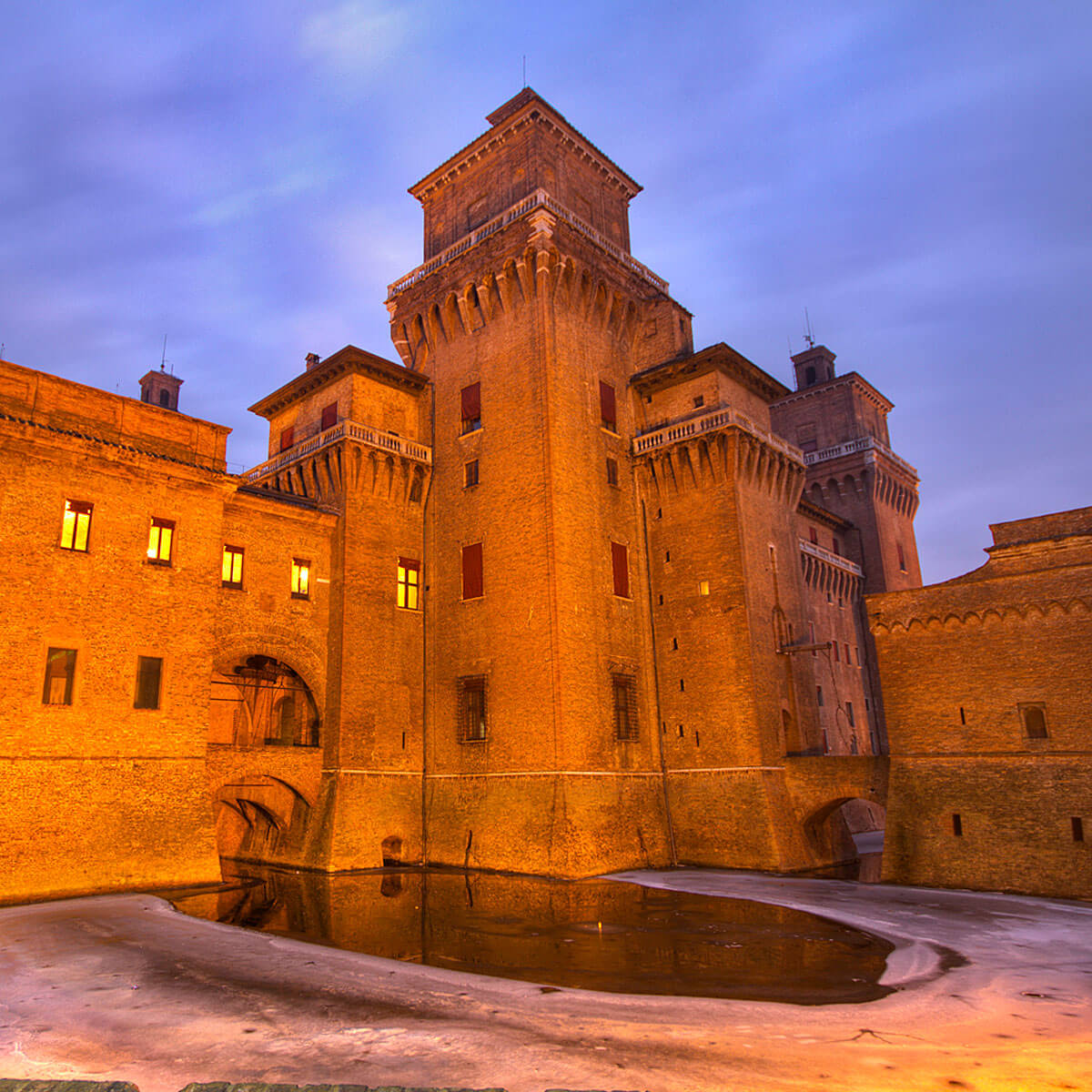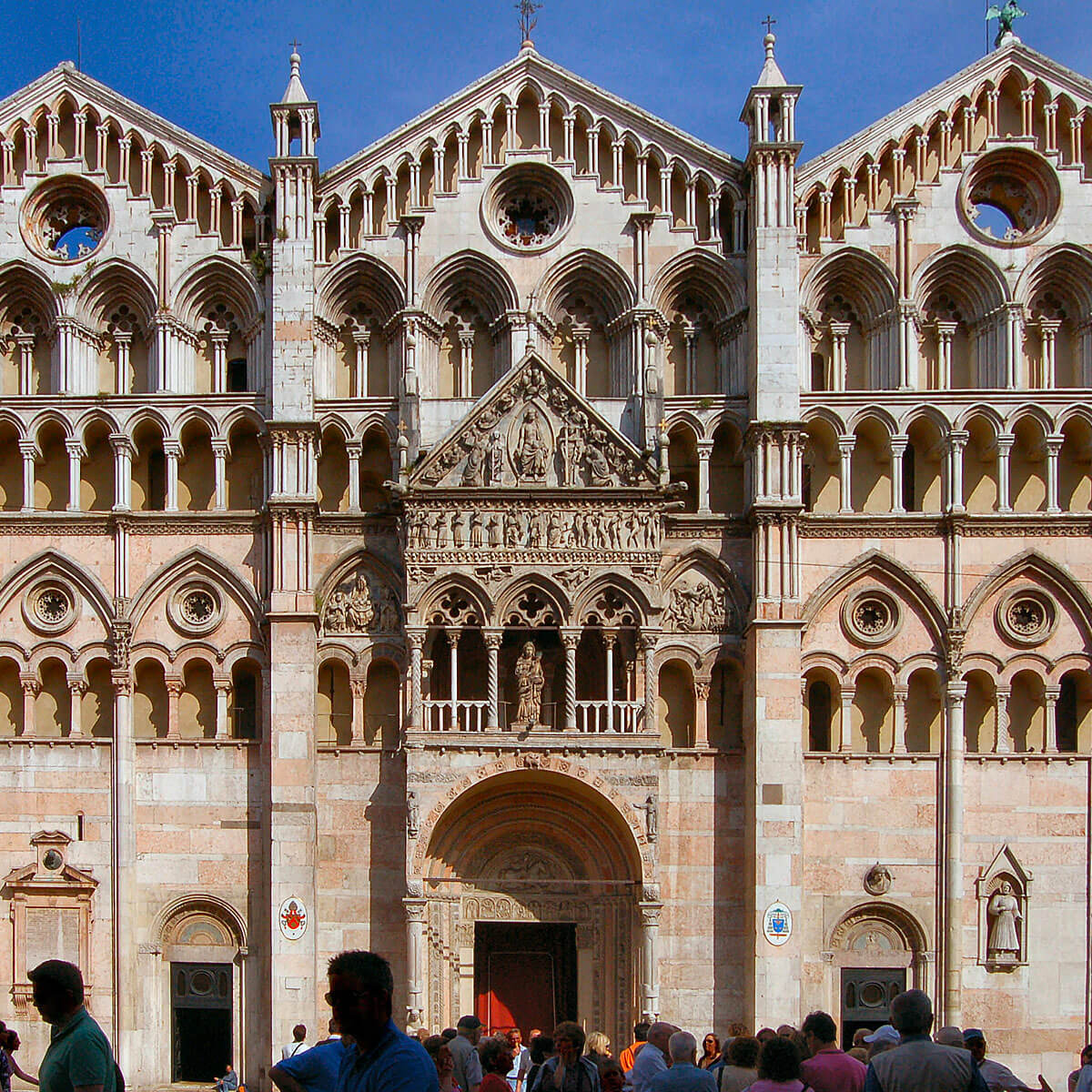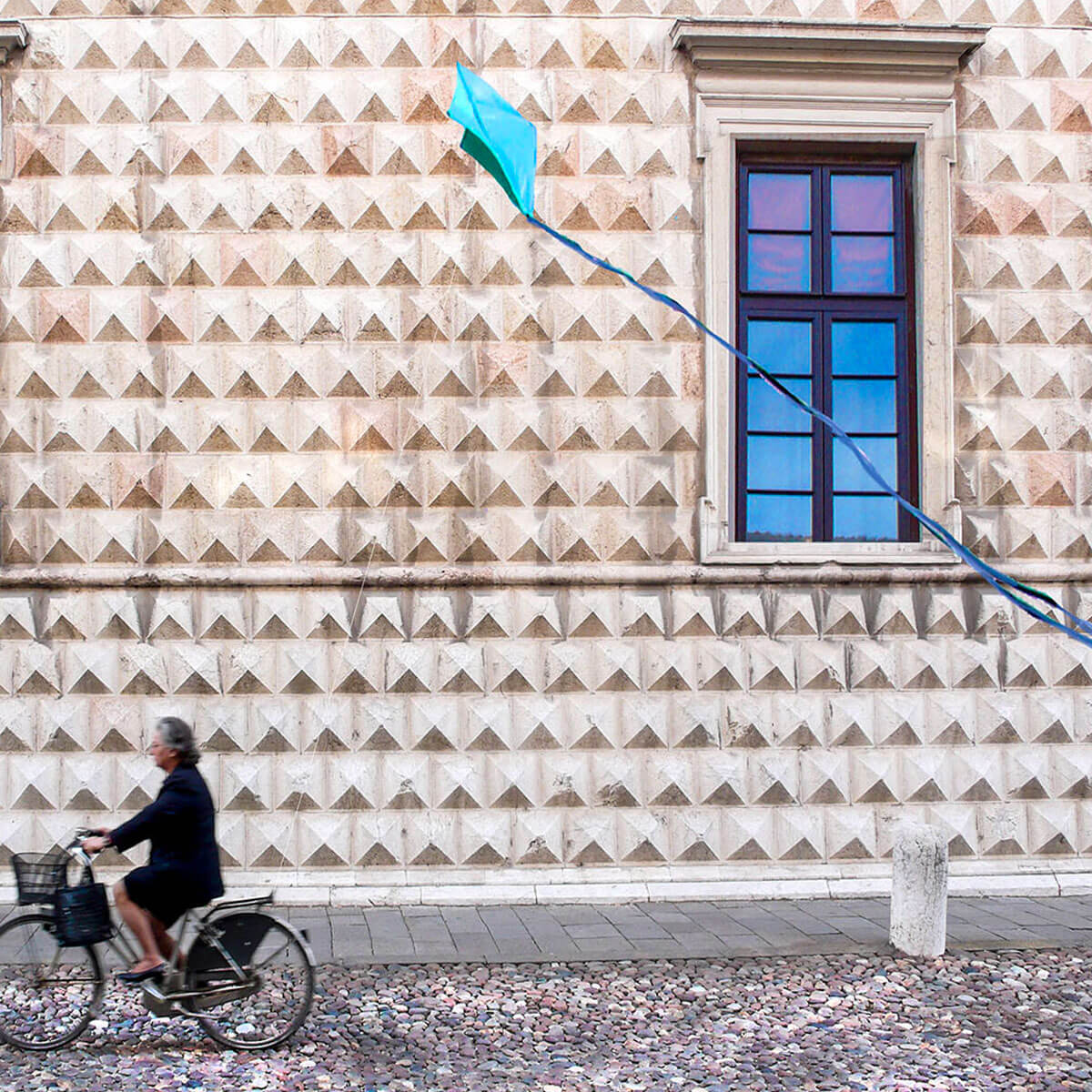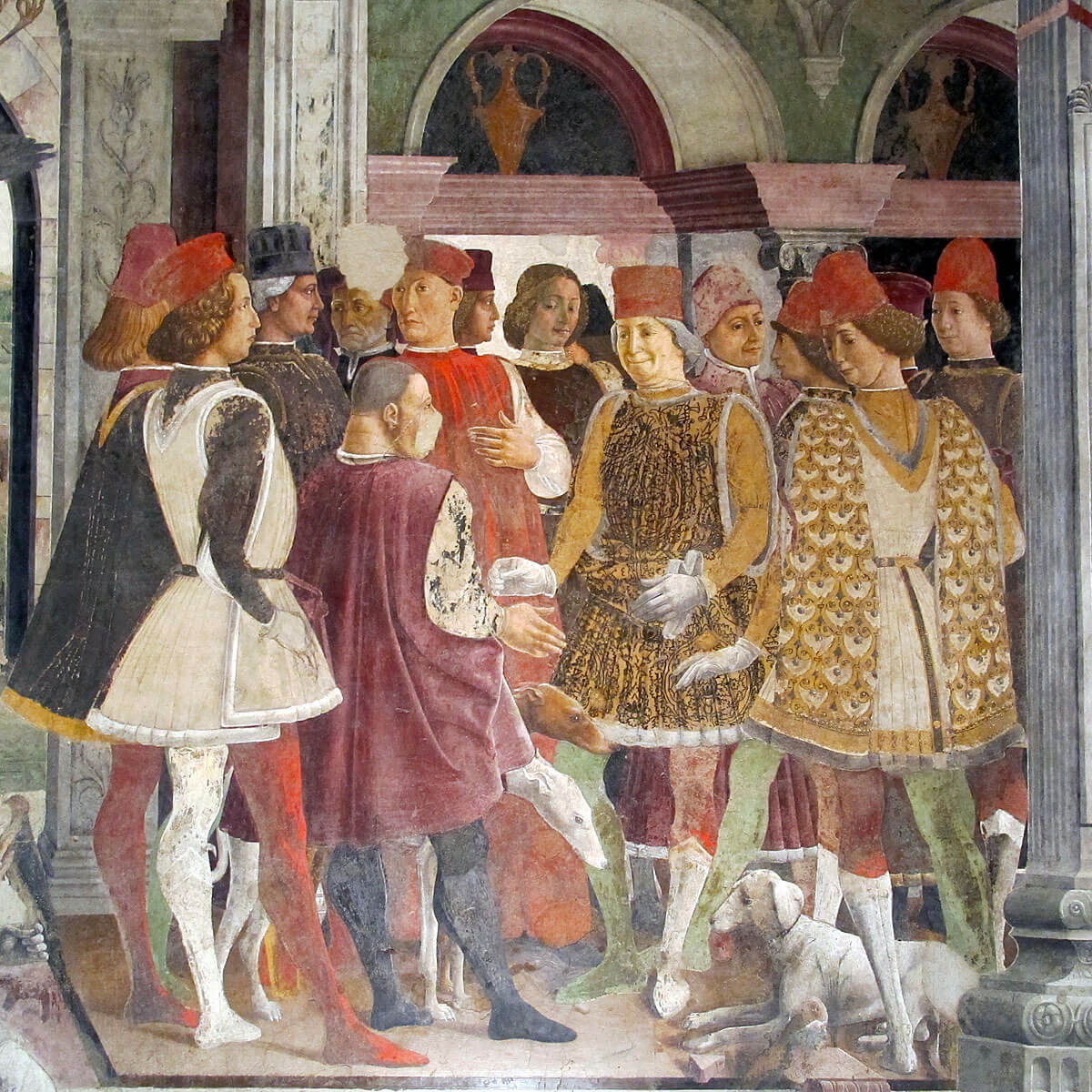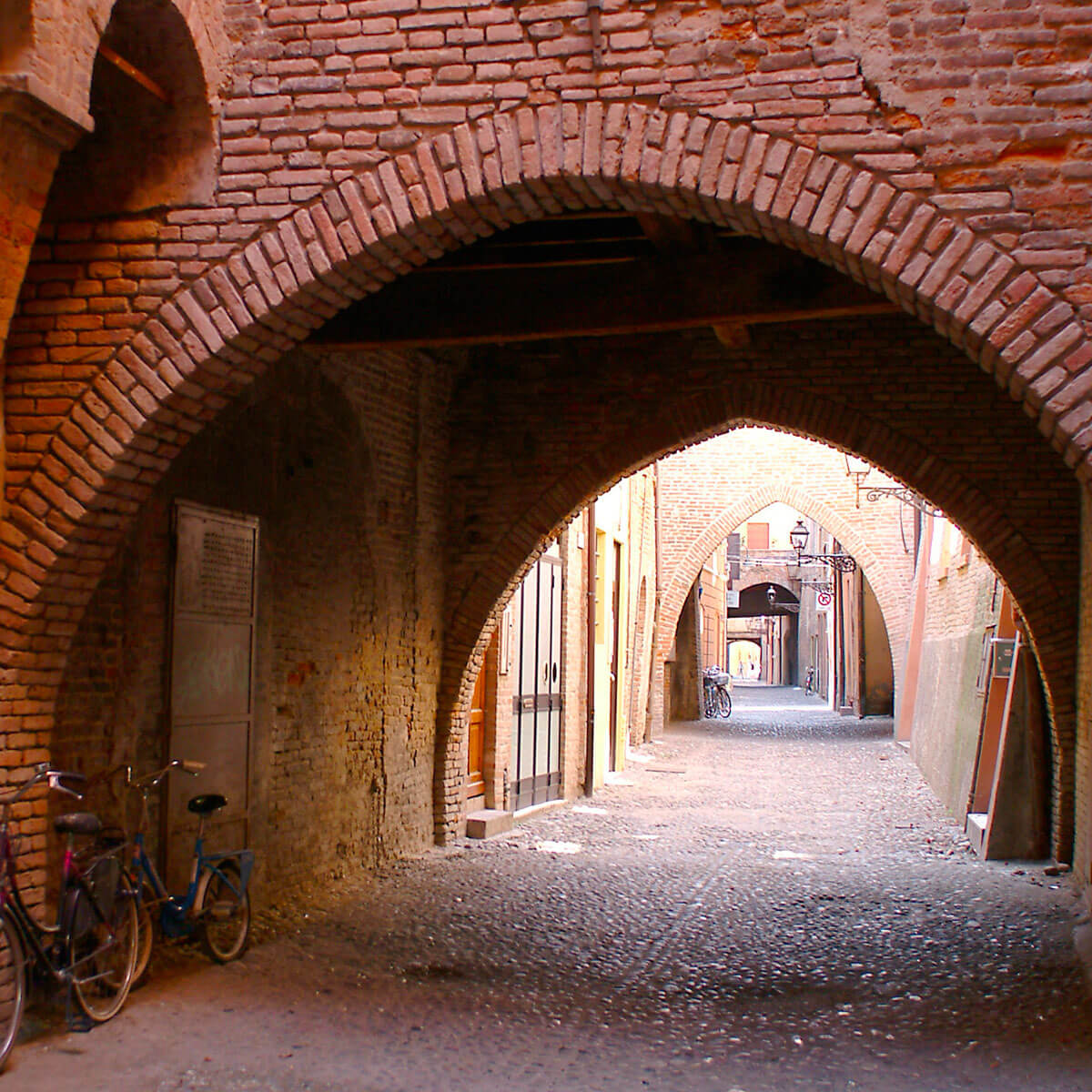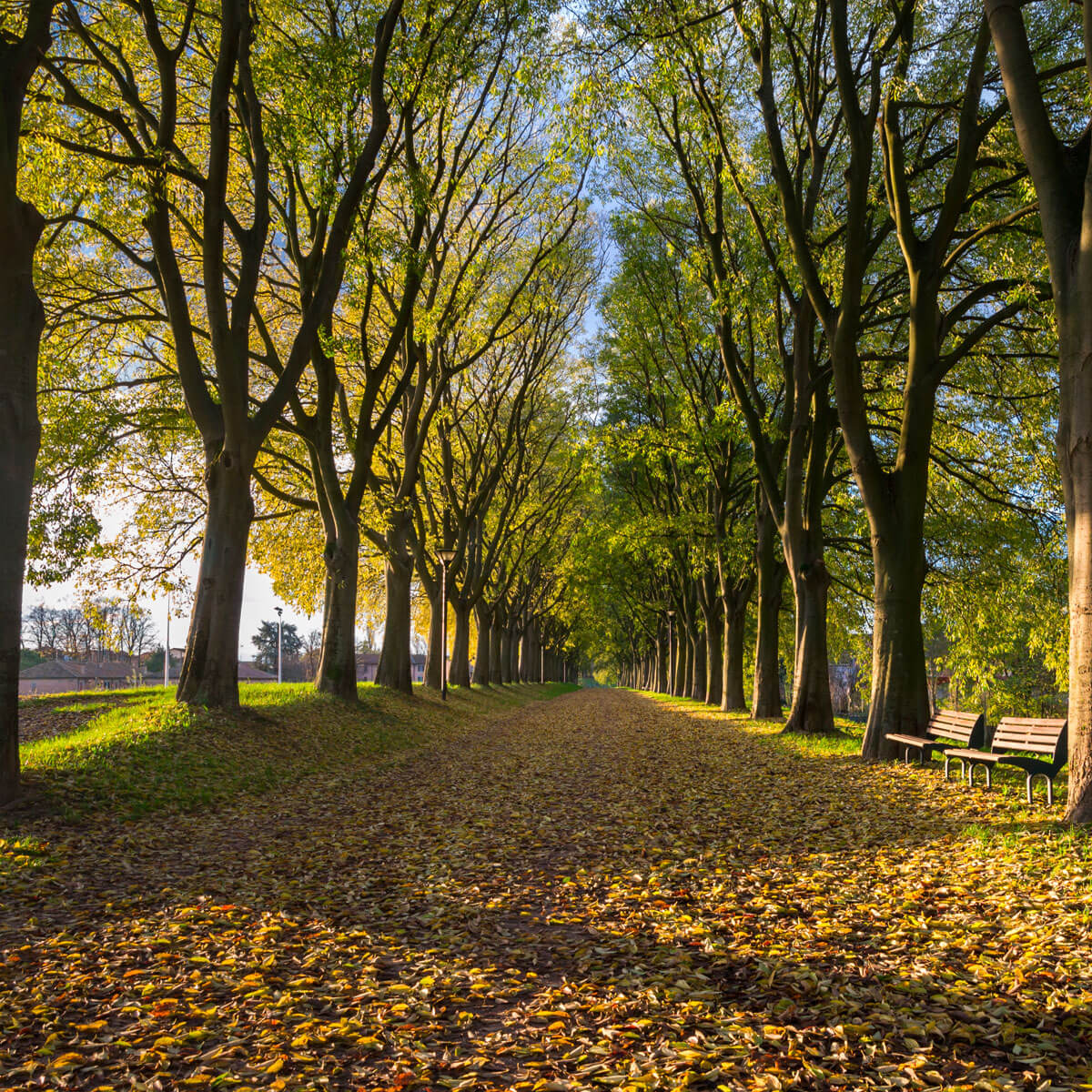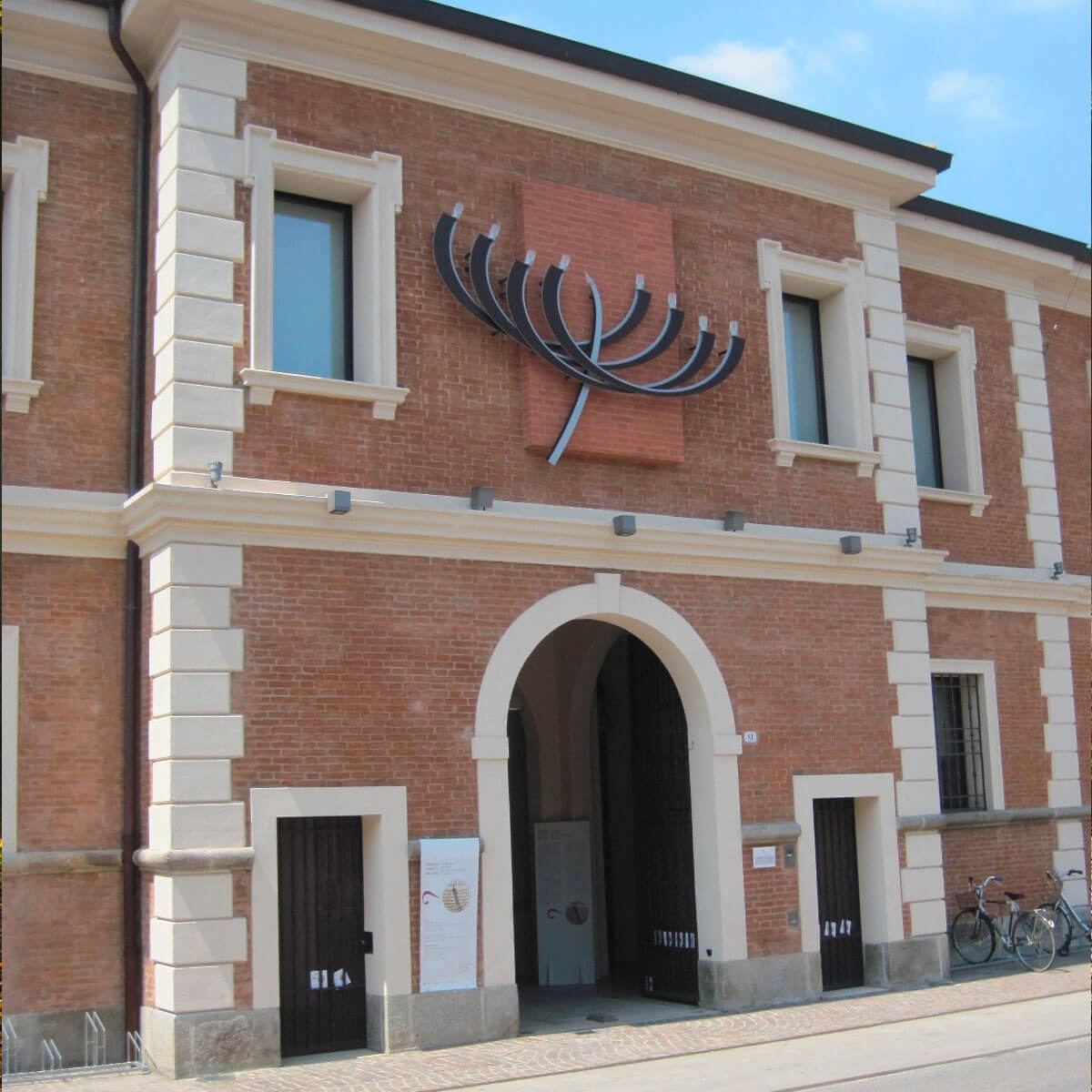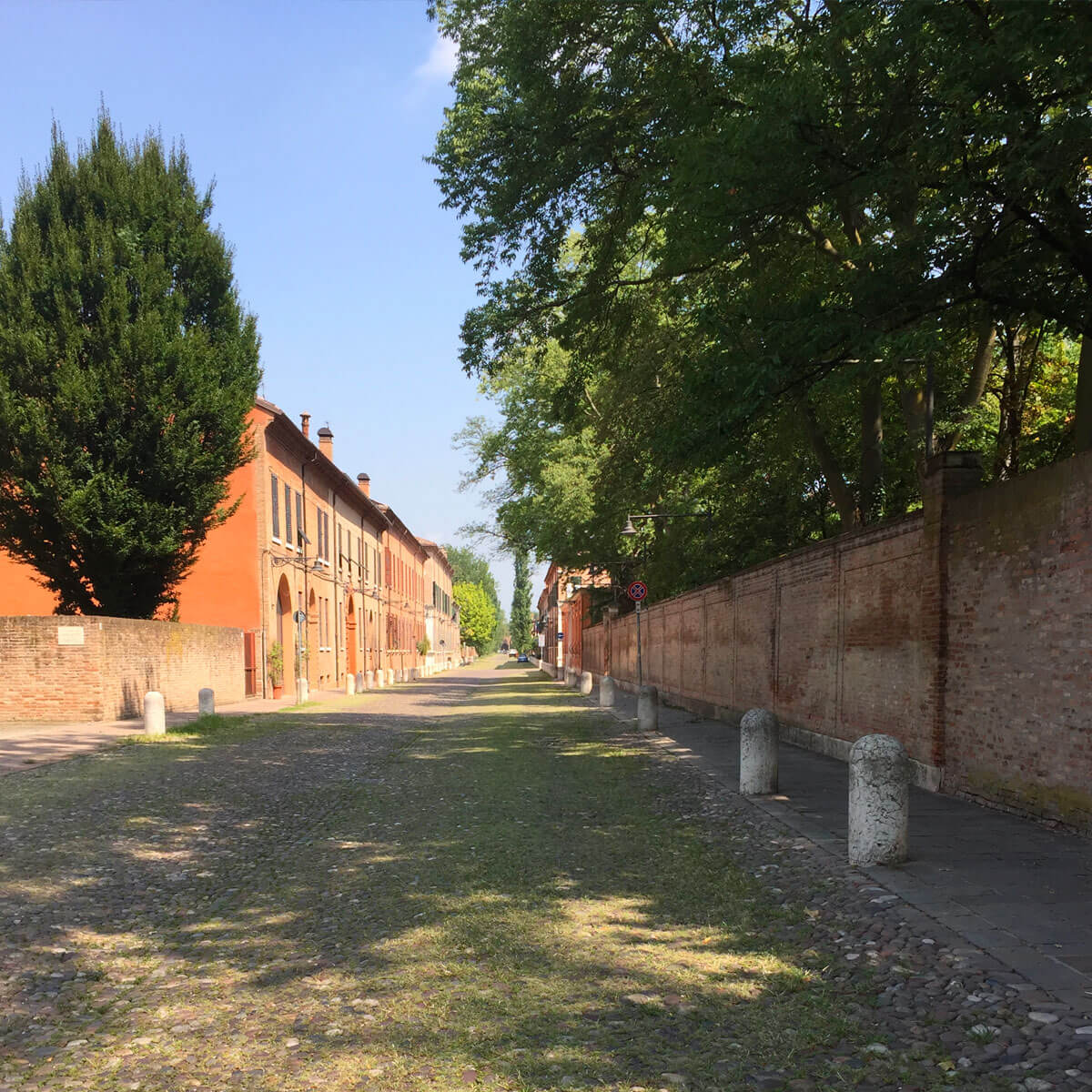Single Deluxe room
Single Deluxe room with single bed, furnished with taste and attention to detail ideal for those who, for business or pleasure, ...
Read moreAn extraordinary city, where the charm and atmosphere of its glorious past have been preserved over time in harmony with the cultural vibrancy of the present.
Este Castle
Conceived as a medieval fortress, then became a government residence in the Renaissance of the Este Court, in the twentieth century elevated to an emblem by the metaphysical painting of Giorgio de Chirico, the Castello Estense is located right in the center of the walled city and you can not not go to discover it.
It is undoubtedly the symbol of the power of the Este family.
It was Marquis Nicolò II who started the construction works in 1385. Ancient seat of the Este militia, with workshops, armories, warehouses and stables, it was then transformed into a noble residence inhabited by the lords of the city in the upper part of the castle. The visit to the apartments, the chapel, the kitchens, the prisons and the garden allows to deepen the life of the Este court, reliving the atmosphere of the daily life of one of the most important families of the Renaissance.
It is the most important medieval monument in the city, inaugurated in 1135. The white marble of its façade immediately attracts the eye, as does its Renaissance bell tower (1441-1596), attributed to designs by Leon Battista Alberti.
Once inside, you can contemplate the painting by Guercino (1629) and the fresco of the Last Judgement by Bastianino (1580) in the apse basin.
The Palazzo dei Diamanti takes its name from the external rustication of its walls, made up of eight thousand five hundred blocks of white marble with pink veins, rough-hewn and pointedly faceted like the precious stone from which it takes its name: the diamond. It is one of the city's main tourist attractions, a building that, for the splendour and uniqueness of its structure, is considered one of the main and most representative buildings in the city.
It is considered one of the main and most representative buildings of the Italian Renaissance.
Built around 1385-1391 as a suburban recreational residence to "schifar", or "schivar", boredom, the palace was later enlarged at the behest of Borso d'Este (1450-1471) who shaped the building in his own image and likeness, making it sumptuous and unique, in keeping with the European grandeur of Ferrara at the time.
After being compared to a "gem set in a ring" and being the fulcrum of court life in the 15th and 16th centuries, Schifanoia underwent a slow decline that altered its function and form until, in the 19th century, the rediscovery of the decorations in the Salone dei Mesi led in 1898 to the desire to make the former delizia the new civic museum.
Suggestive, poetic when the fog envelops the city. The street, of early medieval origin (9th century), was the back of the Po river bank that once passed through Ferrara, which initially grew up along its course as a commercial city. At that time the street was flanked by merchants' warehouses and the connection with the houses was provided by the arches that still characterise the street, making it the most emblematic of the medieval city.
The typical cobblestone paving, on the other hand, only became widespread in the 18th century.
At the crossroads with Corso Porta Reno, the 10th-century Torre dei Leuti is the only surviving tower of 32 aristocratic towers from the communal period.
In Ferrara the bicycle is an institution, a symbol or simply the most convenient and fastest way to experience the city. An itinerary for discovering Ferrara on foot is to follow the route of its walls.
Tree-lined embankments and defensive valleys have become a public park in peacetime.
Studied in 1529 even by Michelangelo, the Walls of Ferrara (9 km) are a model of military architecture that can be appreciated in the saddle, both from above and from the once-flooded moat.
Starting from viale Belvedere, we ride along the northern section, built under Hercules I by Biagio Rossetti in fear of Venice (1493-1505). There is a succession of low circular towers, while here and there in the walls are rifle pits, patrol paths and gunports, with rows of trees further reinforcing both the curtain wall and its height.
In the middle of the northern section is the Porta degli Angeli (1525), while at the north-eastern apex protrudes the tip of the Montagnola. To the east from the tower of St. John there are high bastions in the shape of a triangular arrow, while in the southern section the bastions are close to the ace of spades. We continue towards Porta di S. Pietro and Porta Paola, where the history of the walls is documented, a good opportunity to put the bike down and clear your head!
Just a few steps away from the historical centre of Ferrara, the Museo Nazionale dell'Ebraismo Italiano e della Shoah (MEIS) provides an insight into over two millennia of Jewish history in Italy. This constantly evolving exhibition is housed in what were once the city's prisons.
From a space of imprisonment to a place of meeting and exchange
This is the story of the MEIS, a museum dedicated to the millenary culture of a population that has been present in our country for 2200 years.
An ambitious project that bears witness to the value of dialogue between cultures, as part of a major urban redevelopment of the Darsena area.
A change of scene between the Middle Ages and the Renaissance in the theatre of Ferrara's history. Even Unesco has realised that the ancient Via degli Angeli is one of the most beautiful streets in the world. It connects the Castle to the gateway through which the Este family left Ferrara forever in 1598. It is flanked by stately palaces built on land given by the Duke to his favourite families, starting from No. 1 where the palace of the former Monte di Pietà (1756-61) stands.
From the junction with Via Padiglioni, the Naselli-Crispi palace can be seen at the end.
The sequence continues with palazzo Giglioli-Varano, palazzo Gulinelli, the Rossettian palazzo of Giulio d'Este and the neoclassical palazzo Camerini. The street then opens out into the enchanting fifth of the quadrivio degli Angeli, the intersection of the street with corso Porta Mare and corso Biagio Rossetti.
Ferrara can boast a lively reality full of splendid art exhibitions, a refined concert season, various cultural events and much more. Find and book your experiences in Ferrara now.
Find experiences in FerraraAre you looking for comfortable rooms to sleep in Ferrara? The suites at Hotel Lucrezia Borgia are all personalised in their details and fine fabrics.
Single Deluxe room with single bed, furnished with taste and attention to detail ideal for those who, for business or pleasure, ...
Read moreRoom with French bed 140X190, classically furnished but comfortable with warm wooden floor. Ideal for single travellers or ...
Read moreSuitable for two guests, our Standard Twin Rooms are air-conditioned and feature a flat-screen TV, safe, desk and free Wi-Fi. The ...
Read moreThe Deluxe Twin room, with its impeccable design, is a synthesis of class and elegance. This room type offers two XL single ...
Read moreSuitable for two guests, our Standard Double rooms are equipped with air conditioning, a flat-screen TV, safe, desk and free ...
Read moreThe Deluxe Double room, with its impeccable design, is a synthesis of class and elegance. This room type offers a king-size ...
Read moreSuitable for three guests, our Triple rooms with standard single beds or with a double bed and a third bed are equipped with air ...
Read more
We and selected third parties use cookies or similar technologies for technical purposes and, with your consent,
also for other purposes as specified in the .
If you close this banner with a tick or click on "Decline", only technical cookies will be used. If you want to select the
cookies to be installed, click on 'Customise'. If you prefer, you can consent to the use of all cookies, including
cookies other than technical cookies, by clicking on "Accept all". You can change your choice at any time.
